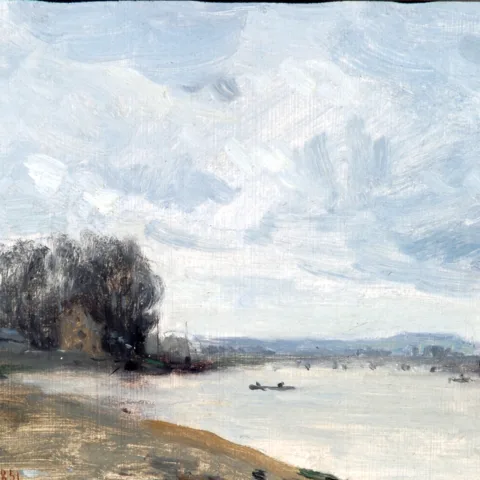The Bowes Museum Blog

The Nativity by Jacques Stella ‘In Focus’

Jacques Stella, The Nativity, France, oil on copper, 1639
This tender picture, dated 1639, is an exquisite example of the French Classicism and it is also Stella’s biggest painting on copper. The artist depicts here the Nativity scene with Mary and Joseph contemplating in adoration the infant Christ.
The composition is a masterpiece of the purist rigour and the three figures are presented in an essential space, where the antique architecture in ruin has the relevant function of framing the central scene. In the foreground, in fact, the architrave fragments and the base of the column on the ground point to the group that animate the painting. The architectural elements are also traditionally part of the setting of the Nativity, since the stable at Bethlehem ─ at that time governed by the Romans ─ is usually placed in a dilapidated noble palace. At the same time, they could symbolise the collapse of the pagan world and the Synagogue replaced by the Church.
Mary and Joseph are kneeling and gazing towards Jesus, who is lying down on a crib made with straw, illuminated by the rays of golden light penetrating from the clouds in the sky. The ox and donkey are behind Mary, nearly hidden in the darkness, while through the ruins in the background, on a distant hill, an angel appears to the shepherds annunciating the birth of Christ.
Stella carefully selected a sober palette that includes the red and blue of Mary’s dress, the grey tunic and yellow drapery of Saint Joseph, the pink flesh of the naked infant and the white cloth of his crib. This iconography with the infant on the ground and the symmetrical position of the Virgin and Saint Joseph reminds medieval and Renaissance formulas and scenes depicted by Lippi, Perugino and Botticelli, among others. The artist shows an exceptional ability in representing a scene characterised by an eloquent simplicity and contemplative gravity.
By Bernadette Petti, Assistant Curator of Fine Art
Bernadette will be exploring the significance of The Nativity in a short talk this weekend, as part of our Christmas Market activities.
Saturday 19 December 2015, 2pm, Free with admission, Meet at the Silver Swan immediately after its performance.
Join Dr Howard Coutts, Keep of Ceramics, for a short introduction to the short introduction to the brilliant new ceramics galleries.
Sunday 20 December 2015, 11am, Free with admission, Meet at the Silver Swan
Join Assistant Curator of Fine Art Bernadette Petti for a short introduction to the The Nativity by Jacques Stella, an enchanting and festive painting in the Museum’s collection.
Further reading:
| Laveissière S., et al, Jacques Stella (1596-1657), Musée des Beaux-Arts de Lyon, 2006
Masterpieces of Reality: French Seventeenth Century Painting, Leicester Museum and Art Gallery, 1985-1986, cat. no. 51, Hidden Treasures, The Bowes Museum, 2001-2002. |
| Conran, E., et al, The Bowes Museum, London, 1992, p. 30, fig. 2; Crossling, B., European Paintings from the Bowes Museum, London, 1993, pp. 18-19. |







